Guided Nakasendo Trail Walking and Hiking Tour
Embark on an unforgettable 8-day journey through Japan, from the vibrant streets of Tokyo to the serene landscapes of rural villages and historic towns. Walk the Nakasendō Trail, once traveled by samurai, merchants, and pilgrims, and discover beautifully preserved post towns like Narai, Tsumago, and Magome, where traditional wooden houses and cobblestone streets evoke the charm of centuries past. Hike scenic passes such as the Torii Pass and wander forested trails, observing local artisans at work and savoring regional delicacies like soba noodles and gohei-mochi.
In Shiga Prefecture, experience panoramic views from Mt. Shizugatake, explore the historic Hikone Castle, and unwind at a tranquil onsen nestled in nature. The journey concludes in Kyoto, the cultural heart of Japan, where you’ll stroll through iconic temples, tranquil gardens, and the famous Fushimi Inari Shrine with its endless torii gates. This tour perfectly blends gentle hiking, immersive cultural experiences, and peaceful walks, offering a rare glimpse into both Japan’s urban vibrancy and the timeless beauty of its countryside.
Guided
Casual+ hotels
Tokyo
Kyoto
moderate to challenging
7 km / 4 mi
5
Min. 4, Max. 12
Tokyo Narita Airport (NRT) or Haneda Airport (HND)
Kansai International Airport (KIX) Osaka
Highlights
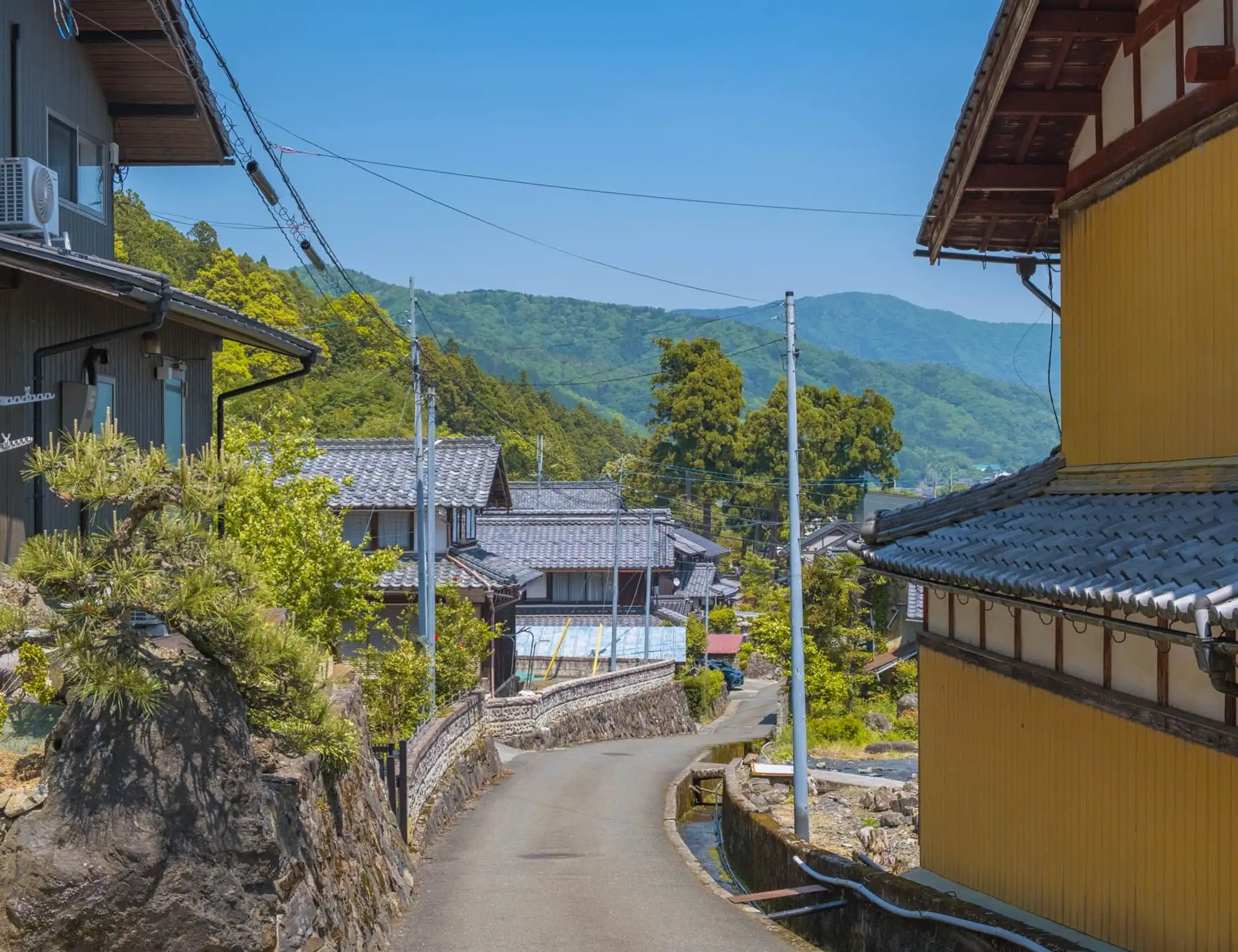
Walk Japan’s Historic Nakasendo Trail
Trace the footsteps of samurai, merchants, and pilgrims along one of Japan’s five ancient highways. From Kiso-Hirasawa’s lacquerware workshops to the Edo-era charm of Narai and Tsumago, experience living history on beautifully preserved post towns.
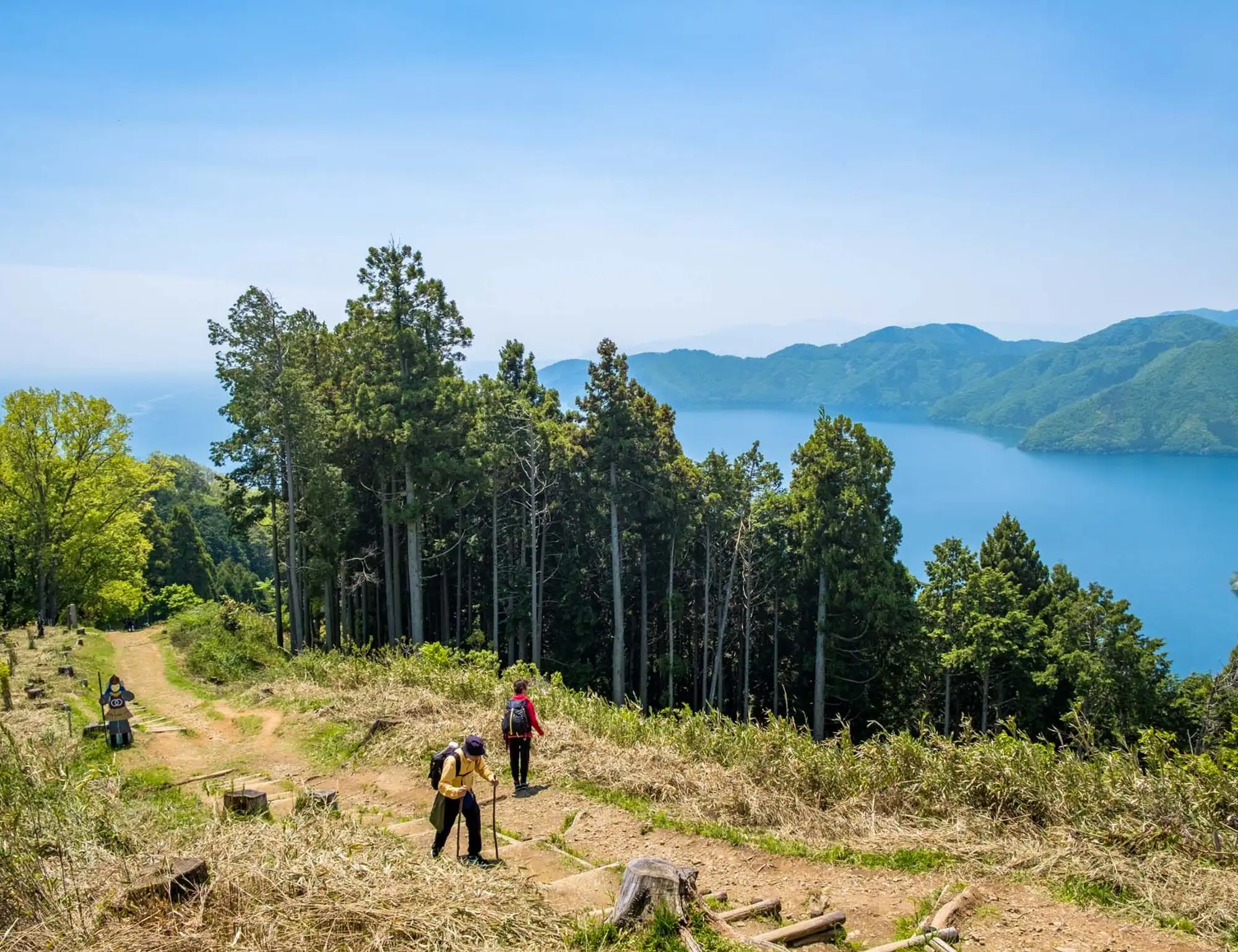
Shiga’s Scenic Peaks and Lake Biwa Views
Hike up Mount Shizugatake for sweeping panoramas of Japan’s largest lake, then explore the castle town of Hikone with its national treasure fortress and serene Genkyu-en Garden.
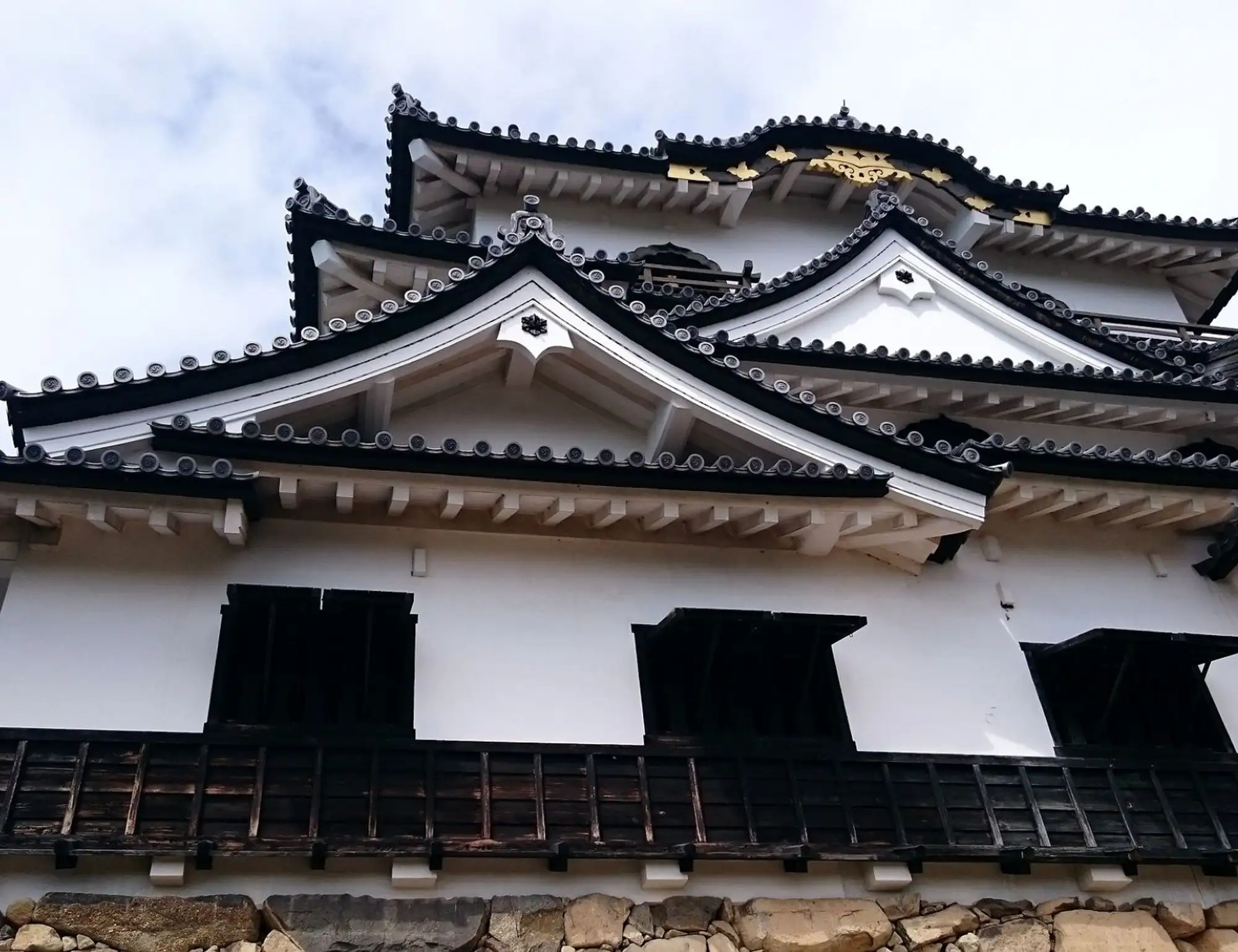
Kyoto’s Timeless Temples and Trails
End your journey in Kyoto, walking from Fushimi Inari’s vermilion torii gates to the tranquil Philosopher’s Path. Visit Nanzen-ji and the Silver Pavilion, soaking in the harmony of gardens, shrines, and ancient traditions that define Japan’s cultural heart.
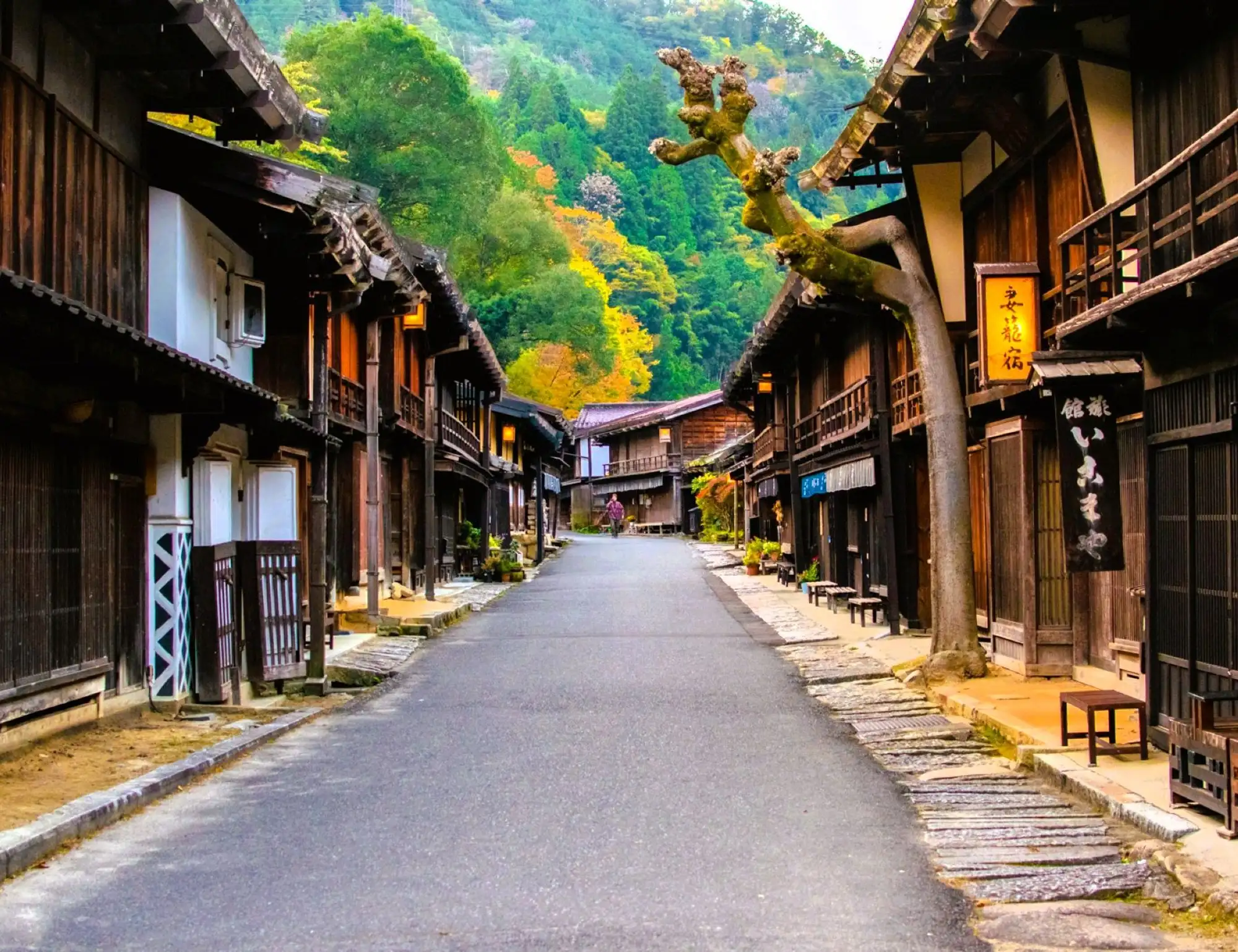
Explore Historic Narai Village
Step back in time as you wander through Narai Village, one of the best-preserved post towns along the ancient Nakasendō Trail. Its wooden houses, quaint shops, and serene atmosphere offer a glimpse into Japan’s Edo-period charm.
Itinerary
Brief Itinerary
Meals are indicated as B = Breakfast, L = Lunch, D = Dinner.
Listed hotels are subject to availability and may be replaced with similar alternatives of equal standard.
| Day | Place | Casual+ Inns | Meals | Distance | Activity |
|---|---|---|---|---|---|
| DAY 1 | Tokyo | Mitsui Garden Hotel Jingugaien Tokyo Premier (5-star) | D | ||
| DAY 2 | Narai | Oyado Iseya (4-star) | B D | 3 km / 2 mi | walking |
| DAY 3 | Kiso-Fukushima | Ryokan Tsutaya | B L D | 6 km / 4 mi | hiking |
| DAY 4 | Nakatusgawa | Ryokan Hanasarasa | B D | 12 km / 7 mi | hiking |
| DAY 5 | Nagahama | Ryokan Beniayu | B D | 5 km / 3 mi | hiking |
| DAY 6 | Kyoto | Cross Hotel Kyoto | B | 8 km / 5 mi | hiking |
| DAY 7 | Kyoto | Cross Hotel Kyoto | B D | 3 km / 2 mi | hiking |
| DAY 8 | Departure | B |
Detailed Itinerary
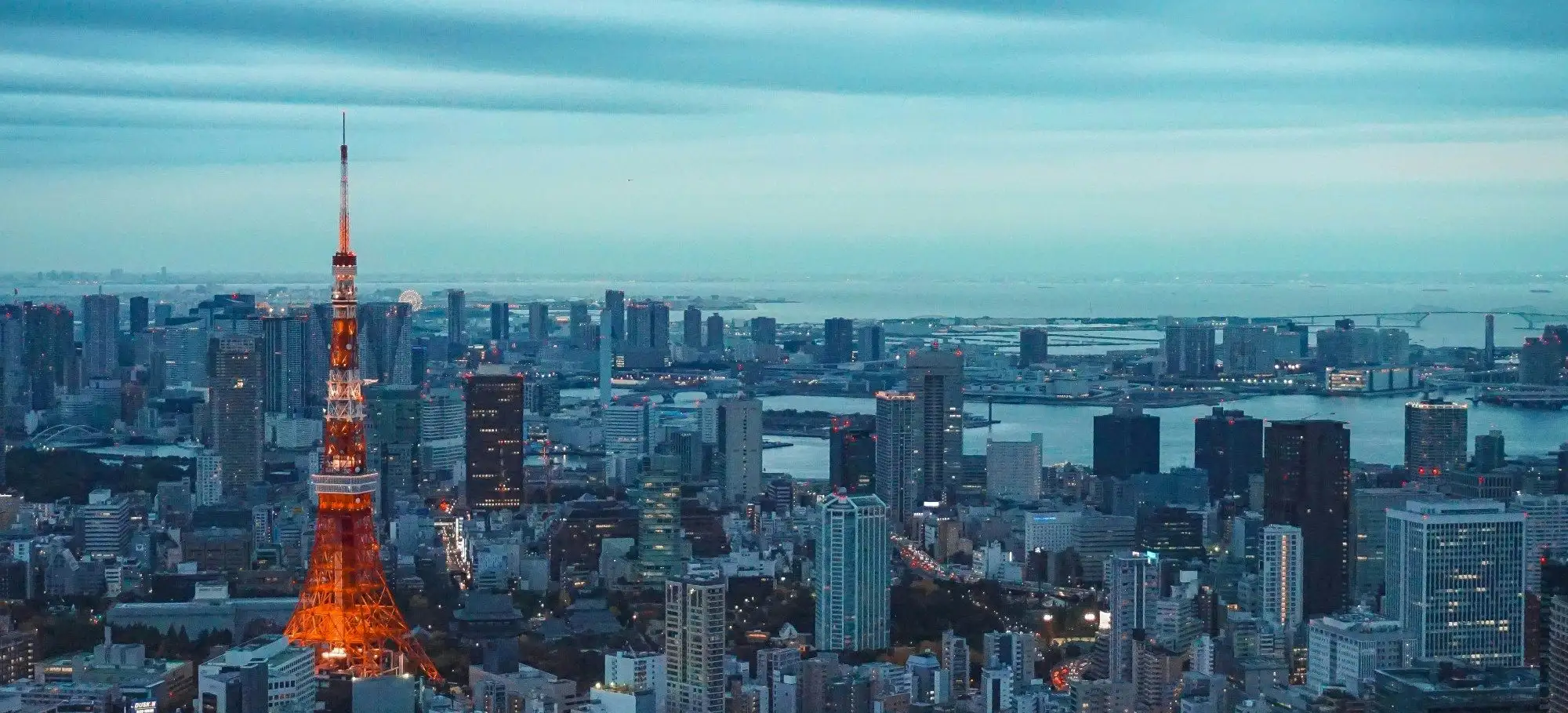
Day 1: Tokyo
After arriving at Tokyo’s Narita or Haneda Airport, make your way to your hotel and take some time to settle in. As evening approaches, meet your guide and fellow travelers for a warm and cheerful welcome session that sets the tone for the exciting days ahead. Later, enjoy a wonderful dinner at a local restaurant, where you will savor your first authentic taste of Japanese cuisine. Surrounded by the vibrant energy of the city, it’s the perfect beginning to your journey filled with good food, new friendships, and the captivating charm of Tokyo.
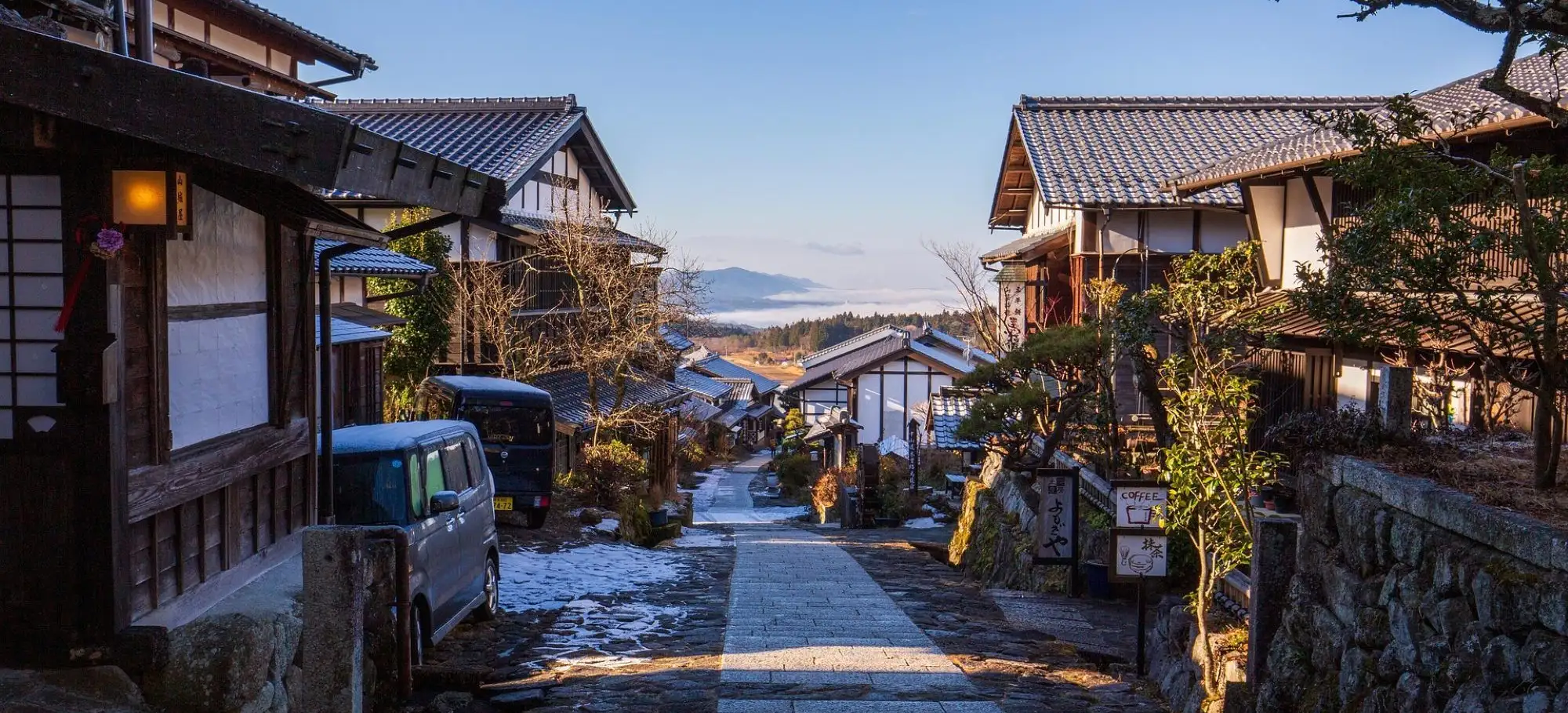
Day 2: Narai
Your journey into rural Japan begins as you leave behind the vibrant streets of Tokyo and board a train bound for the serene and picturesque Kiso Valley, part of the historic Nakasendo trail that once connected Kyoto and Edo during Japan’s feudal era. Over the next three days, you will explore the countryside on foot, walking from one quaint village to another, and spending your nights in traditional, family-run inns known as ryokan and minshuku.
Today’s adventure takes you to the charming town of Shiojiri, where you’ll enjoy a delicious lunch of freshly made buckwheat noodles, or soba, a local specialty beloved across the region. Afterward, begin a gentle 1.6-mile walk from Kiso-Hirasawa to Narai, one of the most beautifully preserved post towns along the Kiso Valley route. Kiso-Hirasawa is renowned for its exquisite lacquerware, and you may get a glimpse of skilled artisans crafting these delicate works by hand.
As evening falls, arrive in Narai and settle into a cozy traditional inn surrounded by the tranquil beauty of this Edo-period village. The day concludes with a warm welcome and a serene traditional tea ceremony, offering the perfect reflection of Japan’s timeless grace and hospitality.
Elevation: Mostly flat
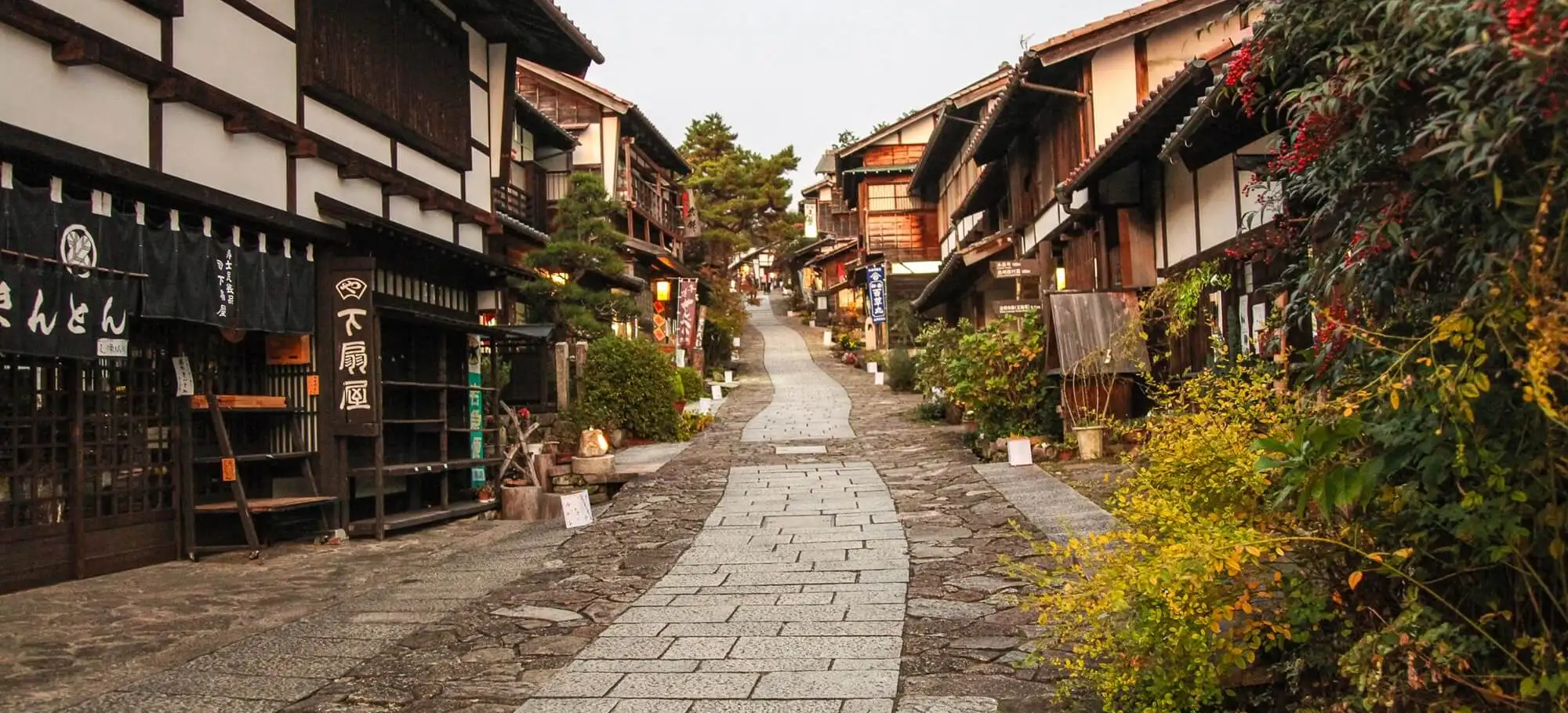
Day 3: Kiso-Fukushima
Your second day on the Nakasendo Trail begins with a scenic 6.2 km (3.9 mile) hike from Narai to Yabuhara, crossing the peaceful Torii Pass, a historic route once used by samurai, merchants, and pilgrims. The forested path offers occasional views of the Kiso Valley and a serene atmosphere throughout the walk.
In Yabuhara, visit a local artisan to learn the craft of making Orokugushi wooden hair combs, a tradition that dates back to the Edo period. You will also explore the Kiso Village Local Museum before enjoying lunch and sake tasting at a historic brewery founded in 1650. Later, take a train to Kiso-Fukushima and stay overnight in a traditional ryokan with a natural hot spring. Relax in the soothing indoor or open-air baths and unwind after the day’s journey.
Elevation gain: 270 m / 885 ft, descent: 344 m / 1,128 ft.
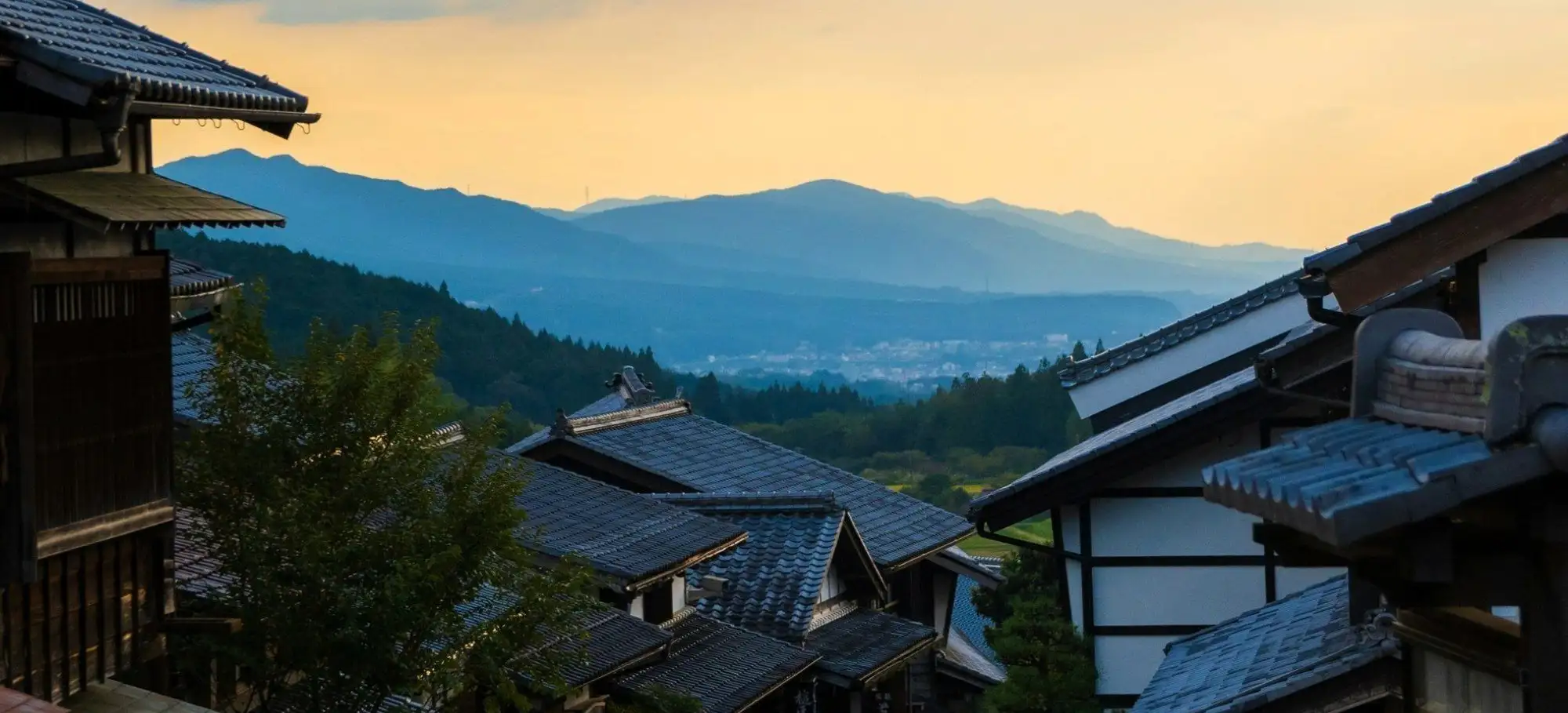
Day 4: Nakatusgawa
Start the day with a scenic train ride from Kiso-Fukushima to Nagiso, bringing you to the southern section of the Kiso Valley. From Nagiso, begin your hike toward Magome, passing through the beautifully preserved post town of Tsumago. Once a key stop on the Nakasendo Trail, Tsumago has been carefully protected by local regulations that prevent alteration or demolition of its traditional houses, making it a living museum of Edo-period Japan. Wander its streets, take in the historic atmosphere, and enjoy glimpses of daily life in this charming village.
From Tsumago, continue the hike for approximately 8 km (5 miles) to Magome, the final post town on your Nakasendo journey. This section is considered one of the most scenic of the entire trail, with quiet forest paths, gentle mountain views, and the tranquil charm of rural Japan. In Magome, explore the stone-paved lanes, browse local shops, and perhaps sample gohei-mochi, a local delicacy of skewered sticky rice coated in sweet soy, sesame, and walnut sauce.
After the day’s hike, check into a cozy inn in Magome for an overnight stay, relax, and soak in the village’s timeless atmosphere.
Elevation gain: 326 m / 1,070 ft, descent: 430 m / 1,410 ft.
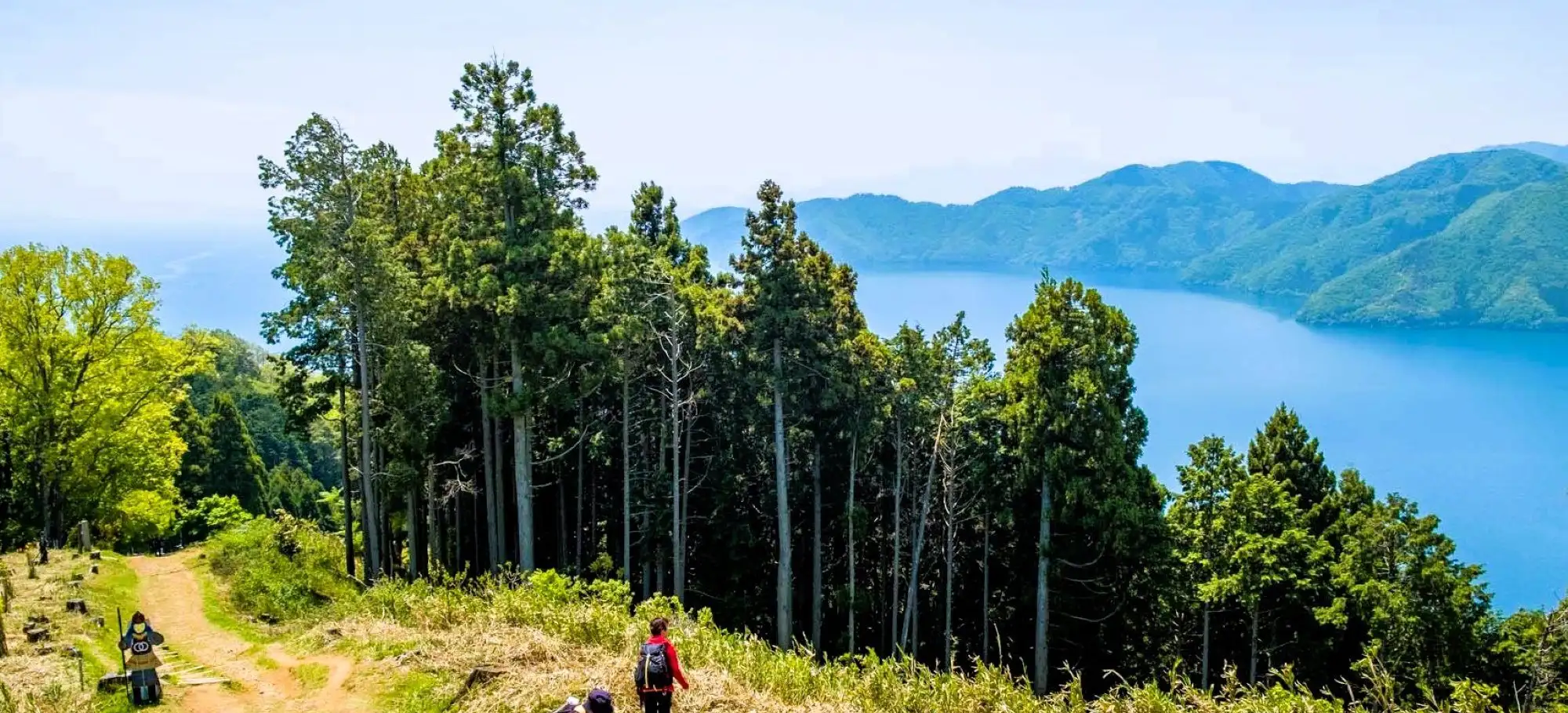
Day 5: Nagahama
Begin the day with a short transfer to Nakatsugawa Station, followed by a scenic train ride of just over three hours to the beautiful Shiga Prefecture. Arriving at Yogo Station, lace up your shoes for today’s hike up Mt. Shizugatake. The trail takes around 2.5 hours to the summit, rewarding you with breathtaking panoramic views of the surrounding countryside. After soaking in the scenery at the top, descend easily using the chair lift.
From the base, a short taxi ride brings you to Kinomoto, a charming post town rich in history. Wander the streets, visit the historic Jizo-in Temple, and enjoy a tour of a local Soy Sauce Brewery. Later, transfer by train and shuttle to your accommodation near the serene Lake Biwa. Spend the evening relaxing in peaceful surroundings or soaking in the onsen and gather with the group for a delightful dinner.
Notes:
- Today, you can purchase lunch at Nakatsugawa Station and enjoy it at the peak of the hike.
- Depending on the group size, one group will visit the Soy Sauce Brewery while the other explores Kinomoto Town with a local guide.
Maximum altitude: 408 m, Elevation gain/loss: 297 m / -81 m,
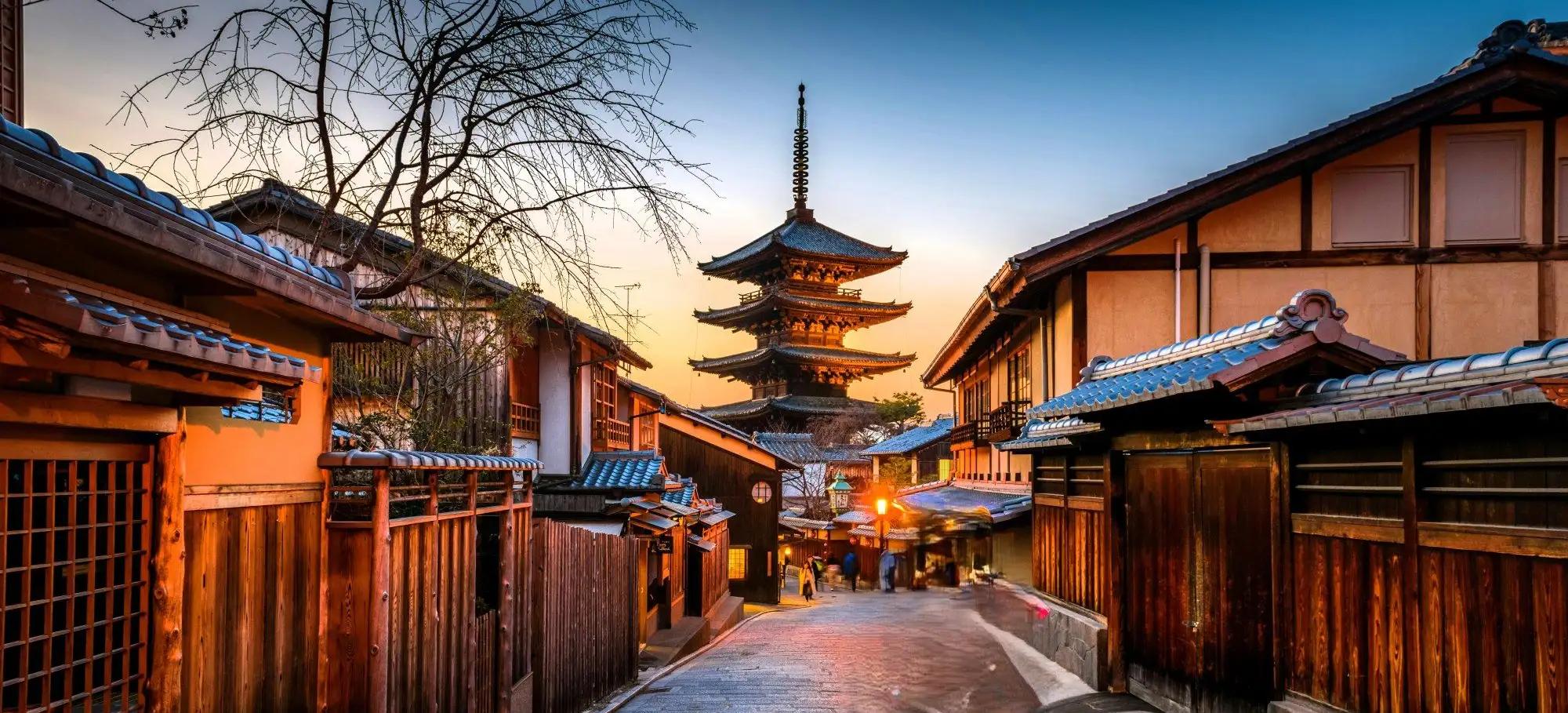
Day 6: Kyoto
Start your day with a train ride to Hikone Station, the gateway to the Sawayama Castle ruins trail. Embark on a scenic hike of approximately 7.8 km (around 5.5 hours), passing through serene temple grounds and historic sites, including the tranquil. The trail Ryotanji and Seiryoji temples leads you to Hikone Castle, one of Japan’s few original castles and a designated national treasure. Explore its centuries-old architecture, enjoy sweeping views over Lake Biwa, and take a stroll through the beautifully landscaped Genkyuen Garden.
After the hike, transfer to Kyoto, the cultural heart of Japan. Spend the evening at leisure, settling into your accommodation and soaking up the city’s timeless atmosphere. For a special experience, wander through Gion, Kyoto’s famous geisha district. Enjoy dinner at your own pace, sampling Kyoto’s local flavors and soaking in the evening ambiance.
Elevation gain/loss: approximately 145 m
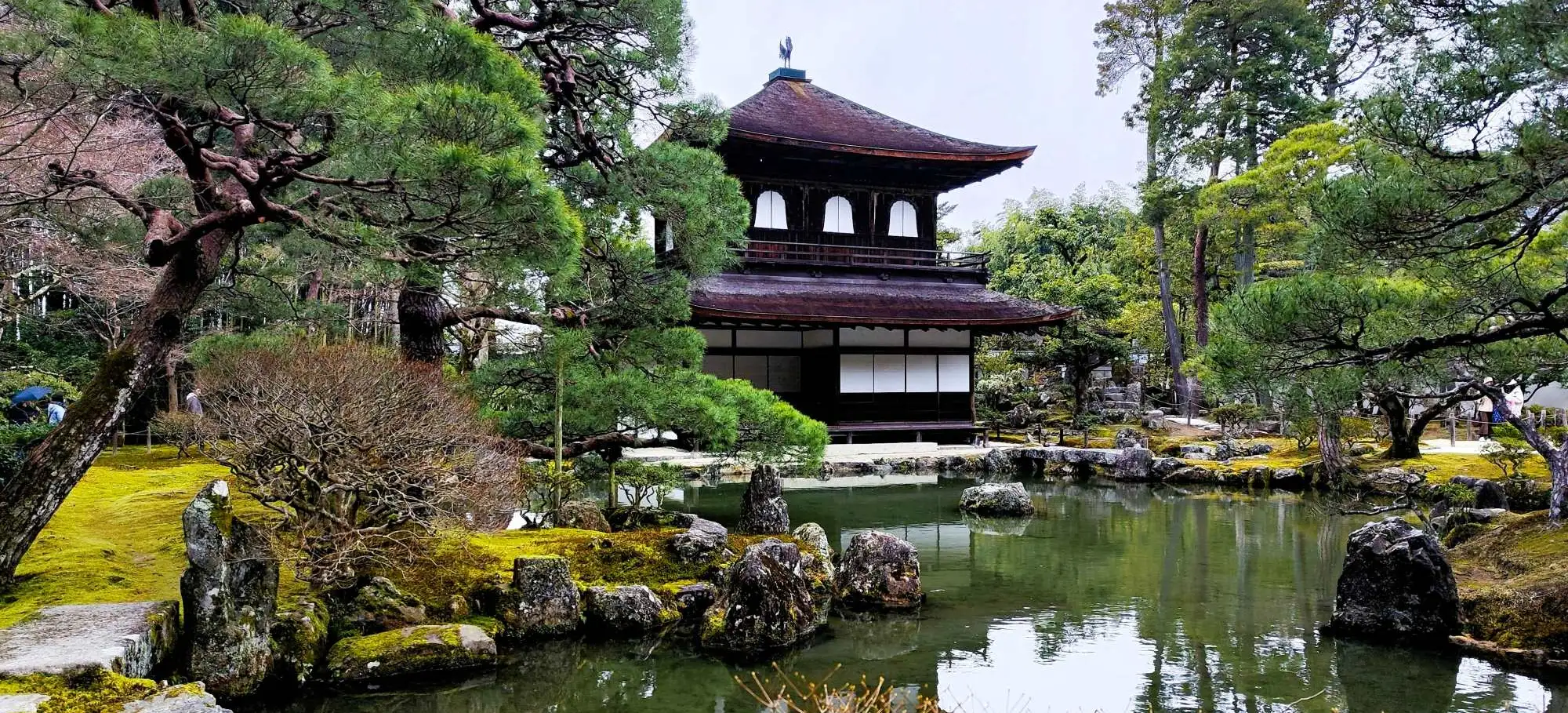
Day 7: Kyoto
Start the morning with a train transfer to the iconic Fushimi Inari Shrine in southern Kyoto, famous for its seemingly endless rows of vibrant vermilion torii gates. Hike along the path that winds up the mountain from the main shrine to the upper sanctuary. These gates, donated by worshippers, express gratitude or seek blessings, creating a truly magical atmosphere.
After exploring Fushimi Inari, continue on foot to Tofukuji Temple, a nearby UNESCO World Heritage site. This beautiful Buddhist temple offers a contrasting perspective on Japan’s spiritual heritage, highlighting the diversity of its religious traditions. Following lunch, take the train to Nanzen-ji Temple, where you can admire its historic architecture and serene gardens.
The day continues with a peaceful hike along the Philosopher’s Path, a scenic riverside trail leading to Ginkaku-ji, the Silver Pavilion. The quiet path, lined with temples and seasonal scenery, brings a perfect close to your Kyoto exploration. In the evening, gather with your guide and fellow travelers for a special Farewell Dinner to celebrate the memories of your journey together.
- Nanzen-ji to Ginkaku-ji: 30-minute walk
Day 8: Departure
After breakfast, your journey through Japan's Nakasendo trail draws to a close. You are free to make your own departure plans. Your guide will be available to assist with any questions, offer helpful tips, and provide guidance for your onward travel plans.
Ready to plan your adventure? Download a print-ready detailed itinerary.
Map
Dates and Prices
Couldn't find a trip with convenient dates?
Open your date as a join-in tour or customize further as a private one.
Essential Info
Inclusions
LODGING
All hotels as mentioned in the tour details or similar (subject to availability).
trip leader
Expert Trip Leader(s) who look after your every need and add meaning to your vacation.
shuttle
A Van support follows the group of riders and carries all belongings.
Luggage Transfer
Transportation of luggage from one hotel to another.
meals
Meals as per itinerary. Guests are given the opportunity to dine on their own so that they discover a location independently.
entrance
Entrance fees to most of the monuments and temples.
Exclusions
Airport pickup
We recommend to book direclty from airport.
Airport drop
We recommend to book direclty from your last hotel.
Beverages
Beverages such as alcohol, tea, coffee, juice at a hotel or restaurant.
Gratuity
Gratuities for your guide team are not included in the trip price.
Arrival & Departure Details
Arrival
Your tour begins in Tokyo. Arrive at the Haneda or Narita airports and take a bullet train (shinkansen) to your hotel.
Departure
Your tour ends in Kyoto, which is only about 75 minutes by direct train (Haruka Express) from Kansai International Airport in Osaka.
Weather
Japan’s landscapes change like a living painting with the seasons. In spring, valleys and villages awaken with cherry blossoms drifting over historic trails. May brings gentle warmth and peaceful walks along rivers and temple paths. Summer fills the mountains with lush green and rivers sparkling under the sun, though it can be hot, humid, and rainy at times.
September offers a mix of sun and showers. Autumn sets forests, gardens, and Kyoto streets ablaze with red, gold, and orange, creating a feast for the eyes. Winter wraps valleys and temples in crisp serenity with occasional snow, offering calm and reflection. From mountain trails to city streets, every season paints Japan in its own magic, inviting travelers to explore, wander, and fall in love with its timeless beauty.
January
Offseason
February
Offseason
March
Best
April
Best
May
Good
June
Offseason
July
Offseason
August
Offseason
September
Mixed
October
Best
November
Best
December
Offseason
Best
Good
Mixed
Offseason
What to Pack
Packing wisely ensures comfort and safety on your hiking adventure. This list covers essential hiking gear, clothing, and travel items to help you handle varied terrain and weather conditions.
Recommended Hiking Clothes & Gear
- Lightweight hiking shoes or boots with good traction.
- Moisture-wicking base layers and breathable hiking shirts.
- Quick-dry hiking pants or shorts.
- Light fleece or down jacket for cooler temperatures.
- Waterproof and windproof shell jacket.
- Sun hat and sunglasses with UV protection.
- Hiking poles (optional but recommended on uneven terrain).
- Small daypack with hydration system or water bottles.
- Headlamp or small flashlight.
- Light gloves and beanie for early mornings or high altitudes.
Clothing
- Layered clothing for temperature changes throughout the day.
- Full-sleeved tops for sun and insect protection.
- Comfortable evening wear for lodges or inns.
- Compact rain jacket for unpredictable weather.
- Extra socks (preferably synthetic or wool).
Other Necessities
- Basic first-aid kit with personal medication.
- Sunscreen, lip balm, and insect repellent.
- Reusable water bottle or hydration bladder.
- Snacks like trail mix, nuts, or energy bars.
- Plug adaptor and power bank for charging devices.
Pro Tips
- Pack light — you’ll appreciate it on uphill climbs.
- Break in your shoes before the trip to avoid blisters.
- Keep rain gear easily accessible in your daypack.
Luggage
Please limit your luggage to one medium-sized suitcase and one daypack. Mark your luggage clearly with your name, address, and phone number.
Visa Information
Before venturing on your adventure, make sure you're equipped with essential travel advice, including security updates, local laws, and crucial passport and visa information. Start by visiting the official government website of your home country for accurate and reliable guidance:
- UK Residents: Stay informed by reviewing the Foreign, Commonwealth & Development Office (FCDO) Travel Advice.
- US Residents: Access vital travel tips and updates through the US Department of State Travel Advice.
- Australian Residents: Plan ahead with the latest updates on the Smart Traveller website.
- Canadian Residents: Find comprehensive travel and visa guidance on the Government of Canada's Travel Advice and Advisories.
- New Zealand Residents: Get practical travel advice on the New Zealand SafeTravel website
- Residents of Other Countries: Check with your government or local consulate for tailored travel advice and requirements.
Note: Passport and visa regulations can change at any time. Stay proactive by checking for the latest updates to ensure a smooth and stress-free journey.
Insurance
Medical insurance that covers medical costs in case of an accident during the trip is mandatory to participate in our tours.
We recommend to purchase adequate travel insurance in order to participate in our tours and protect yourself from unforeseen events. Our experience shows that guests who purchase travel insurance—including coverage for all activities on the itinerary, trip cancellation, interruption, delay, baggage damage, loss or theft, personal accident, death and repatriation costs, medical and emergency expenses (including Covid-19), and personal liability—travel with greater peace of mind.
Can I use my credit card insurance?
Yes, as long as it meets our requirements and provides adequate coverage. Ensure you have an emergency contact number and policy number available.
When should I buy travel insurance?
Purchase travel insurance as soon as you've paid in full or booked your flights.
Is proof of travel insurance required?
Yes. You must provide your insurer's name, policy number, and emergency contact via our reservation form. This is mandatory. If you cannot provide proof, you’ll need to purchase insurance before traveling with us.
Does Art of Bicycle Trips sell travel insurance?
We do not sell travel insurance directly, as we believe our customers should have the freedom to choose a policy that best suits their needs. However, we recommend Insured Nomads as a great starting point.
